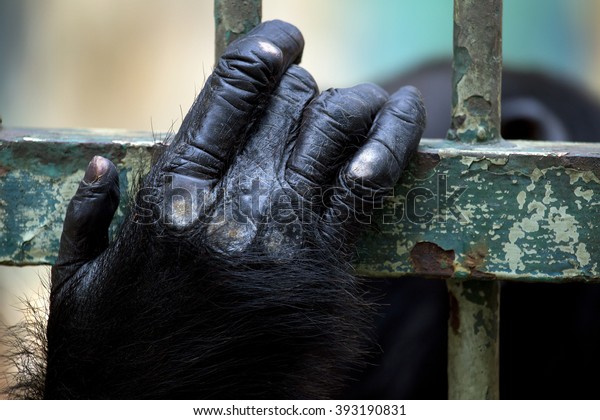
Like Humans, Chimps Tend to Be Right-handed

As a result, chimps and orangutans do not have opposable thumbs as we do. Since the thumb is not as long, it just meets up with the palm, while the chimp's other four fingers extend upward. "Human hands are marked by a relatively long thumb when compared to the length of their four other fingers - a trait that is often cited as one of the reasons for the success of our species because it facilitates a 'pad-to-pad precision grip,'" Hiatt said.Ĭonversely, chimp hands are much longer and narrower. The researchers came to their conclusions after analyzing the hands of humans, chimps and orangutans, as well as the remains of hands for early apes like Proconsul heseloni and the hands of human ancestors, such as Ardipithecus ramidus and Australopithecus sediba.Īlmécija and his team discovered that human hands today are not that different from those of the early human ancestors. Smaers and Jungers are researchers at Stony Brook University, where the research was conducted. Sergio Almécija, a scientist in the university's Center for the Advanced Study of Human Paleobiology, led the study, which was co-authored by Jeroen Smaers and William Jungers. "The findings suggest that the structure of the modern human hand is largely primitive in nature, rather than, as some believe, the result of more recent changes necessary for stone tool-making," Kurtis Hiatt, a spokesperson for The George Washington University, told Discovery News. Prehistoric Moms Had Their Hands Full: Photos The study, published in the latest issue of the journal Nature Communications, determined that while human hand proportions have changed little from those of the last common ancestor of chimps and humans, the hands of chimps and orangutans have evolved quite a bit. There might be a lot of hand clasping going on that I will never know.Given our inherent human-centric viewpoint, we tend to think that our species is more advanced in all respects than other animals, but new research finds that human hands are more primitive than those of our closest primate ancestors: chimpanzees. “I only see what the chimpanzees show me. The difficulty, as in this study, lies in the limitations of observational data, van Leeuwen notes. The team is also looking for signs of dominance in hand clasps and other potential functions of this behavior. Van Leeuwen and his colleagues are currently researching potential differences in how chimps learn handclasp behaviors-for example, from peers, a parent, or other adults-and whether this acquisition is flexible. Perry is less convinced, suspecting that chimps and humans could have evolved independently to learn socially and build culture. “In the absence of broader comparative data it is hard to say whether this shared feature is more due to a shared phylogenetic history or to similar need for social conventions (convergent evolution).” “The motivation/drive to learn socially is most likely a widespread phenomenon that is both spurred by similar selection pressures and phylogenetically preserved,” he writes in an email to The Scientist.

Given chimps’ close genetic relationship with humans, he suspects social learning was a quality found in the common ancestor of the two species. Van Leeuwen sees a potential link between this chimp cultural behavior-and specifically, their ability to learn and then maintain customs over long periods of time-and the evolution of human social behavior. While the function of handclasping is not known, University of Antwerp researcher Edwin van Leeuwen, the study’s author, says he’s not bothered by the ease of comparing these handclasps to human handshakes, themselves a cultural behavior. Andrews in Scotland, first reported observing handclasp grooming in wild chimps in 1978, and this behavior among chimp dyads has attracted increasing research interest in recent years. “The longevity of is new,” she adds, noting that the semi-wild setting of the Chimfunshi Wildlife Orphanage Trust in Zambia where the research was conducted means that the study’s findings likely apply to wild chimps, too.Ĭhimp researcher William McGrew, then affiliated with the University of St. “The fact that different groups of chimps have different repertoires of gestures is something we’ve known for some time,” says Mary Lee Jensvold, the associate director of the chimp sanctuary Fauna Foundation, who was not involved in the research, but it was not clear how stable these behaviors were.

The study findings represent a step forward in understanding chimp sociality and chimp culture-the behavioral patterns that are learned from others in a social group. Over a 12-year span, two groups of chimpanzees maintained distinct, consistent styles of clasping hands while grooming one another, according to a study published May 26 in Biology Letters.


 0 kommentar(er)
0 kommentar(er)
